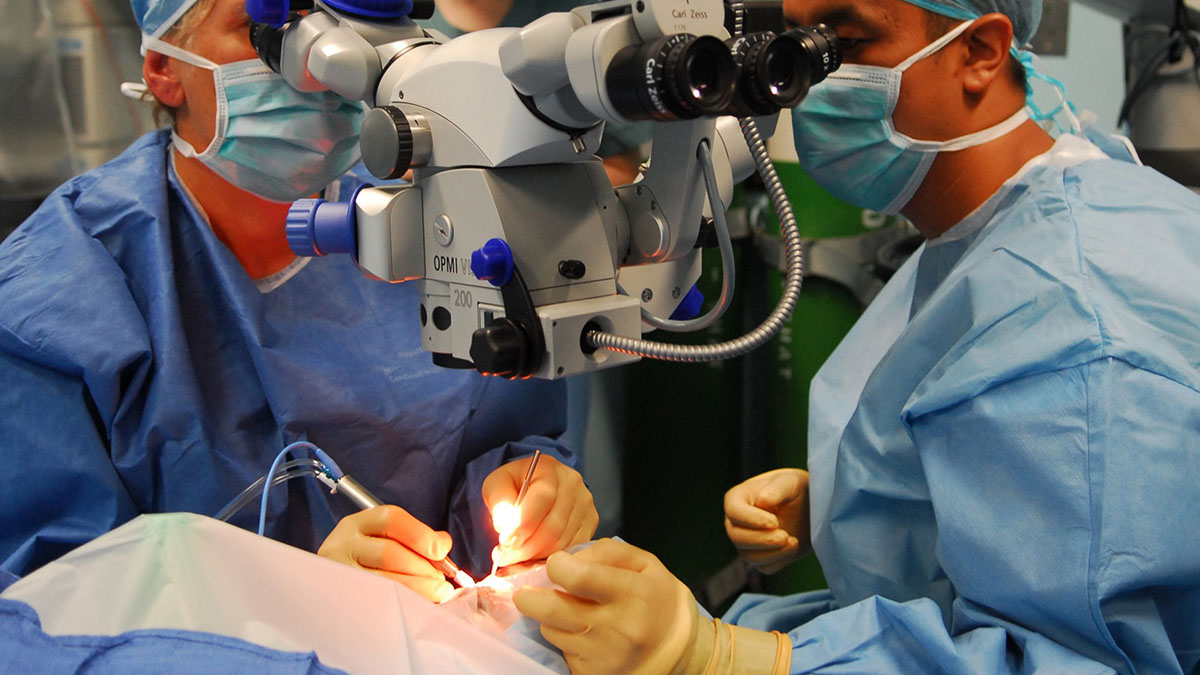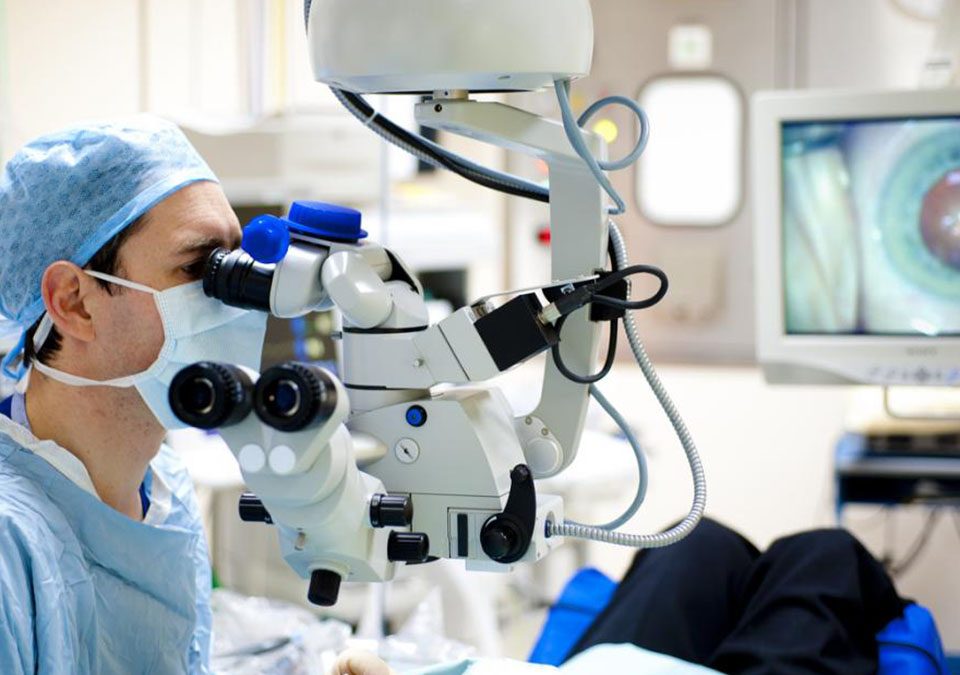Cataract
A cataract is a clouding of the normally clear lens of your eye. For people who have cataracts, seeing through cloudy lenses is a bit like looking through a frosty or fogged-up window. Clouded vision caused by cataracts can make it more difficult to read, drive a car — especially at night — or see the expression on a friend’s face.
Most cataracts develop slowly and don’t disturb your eyesight early on. But with time, cataracts will eventually interfere with your vision. At first, stronger lighting and eyeglasses can help you deal with cataracts. But if impaired vision interferes with your usual activities, you might need cataract surgery. Fortunately, cataract surgery is generally a safe, effective procedure.
Symptoms
At first, the cloudiness in your vision caused by a cataract may affect only a small part of the eye’s lens and you may be unaware of any vision loss. As the cataract grows larger, it may lead to signs and symptoms you’re more likely to notice.
- Clouded, blurred or dim vision
- Increasing difficulty with vision at night
- Sensitivity to light and glare
- Seeing “halos” around lights
- Frequent changes in eyeglass or contact lens prescription
- Fading or yellowing of colors
- Double vision in a single eye
Causes
Most cataracts develop when aging or injury changes the tissue that makes up your eye’s lens. Some cataracts are caused by inherited genetic disorders that cause other health problems and increase your risk of cataracts.
How a cataract forms
The lens focuses light that passes into your eye, producing clear, sharp images on the retina. A cataract scatters the light as it passes through the lens, preventing a sharply defined image from reaching your retina.
As you age, the lenses in your eyes become less flexible, less transparent and thicker. Aging-related changes to the lens cause clouding small areas of the lens. As the cataract continues to develop, the clouding becomes denser and involves a greater part of the lens. A cataract can develop in one or both of your eyes.
Treatment
The only effective treatment for cataracts is surgery. Most eye doctors suggest considering cataract surgery when your cataracts begin to affect your quality of life or interfere with your ability to perform normal daily activities, such as reading or driving at night.
During cataract surgery
Cataract surgery involves removing the clouded lens and replacing it with a plastic lens implant. The replacement lens sits in the same place as your natural lens and becomes part of your eye.
For some people, other eye problems prohibit the use of a replacement lens. In these situations, once the cataract is removed, vision can be corrected with eyeglasses or contact lenses.
Surgery is usually done on one eye at a time, with a few weeks between surgeries. It’s generally done on an outpatient basis, which means you won’t need to stay in a hospital after the surgery. During cataract surgery your eye doctor uses local anesthesia to numb the area around your eye, but you stay awake during the procedure. Cataract surgery is generally safe but carries a risk of infection and bleeding. Cataract surgery increases the risk of retinal detachment.





